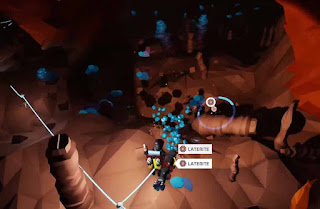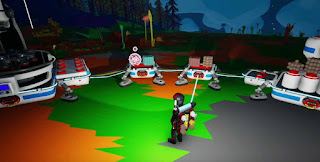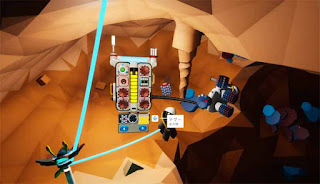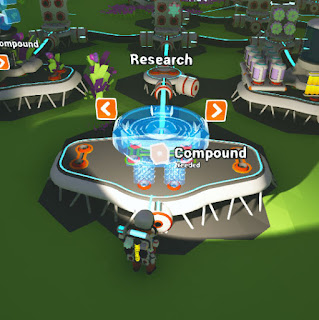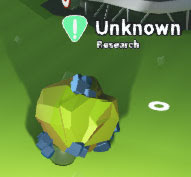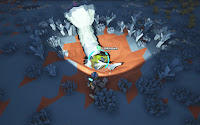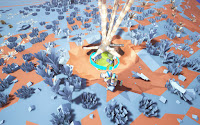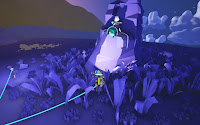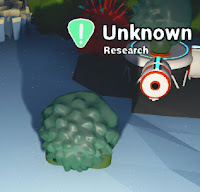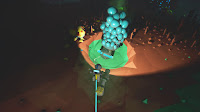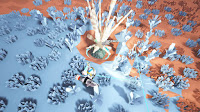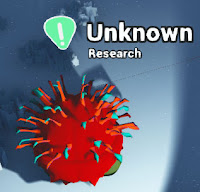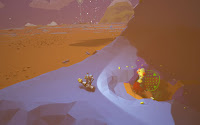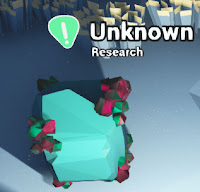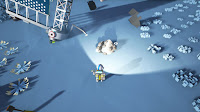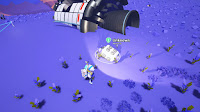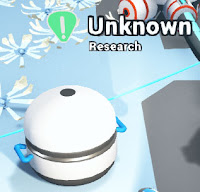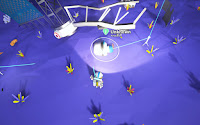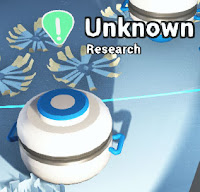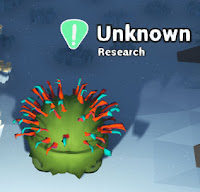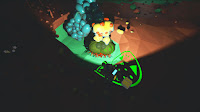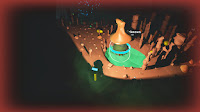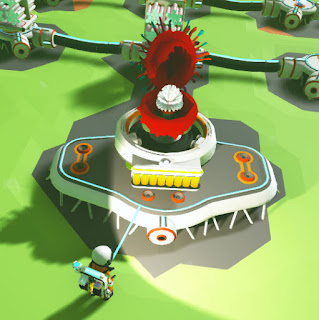Picture this: you’re a lone astronaut in the 25th century, zipping between vibrant planets, digging up alien resources, and building a sprawling base under a neon sky. That’s Astroneer, the sandbox adventure from System Era Softworks that’s been hooking players since its early access debut in December 2016. It hit full release in February 2019, and as of 2025, it’s still getting juicy updates that keep the galaxy buzzing. Let’s dive into why this game’s chill vibes and endless creativity make it a must-play.
Astronauts hard at work, reshaping alien worlds one dig at a time.
Gameplay: Craft, Explore, Survive
Astroneer drops you into a colorful universe where you’re part explorer, part engineer. You start with a modest spaceship and a trusty terrain tool—a gadget that lets you sculpt the landscape like a cosmic artist. Dig up resources like resin, compound, or rare metals, then use them to craft everything from oxygen tethers to massive solar arrays. The game’s crafting system is intuitive: gather, research, build, repeat. Want a rover to zip across a cratered moon? Or a shuttle to hop to a new star system? It’s all in your hands.
The 2024 “Glitchrunners” update and the 2025 roadmap have spiced things up with new automation tools, like programmable drones and advanced logistics, making base-building feel like running a mini space colony. Power management is still a puzzle—hook up wind turbines or RTGs to keep your gadgets humming. And don’t forget oxygen; some planets are harsh, and running out of O2 mid-dig is a rookie mistake.
Multiplayer: Squad Up for Galactic Shenanigans
Everything’s better with friends, and Astroneer’s co-op mode lets up to four players team up. Whether you’re pooling resources to build a mega-base or racing rovers across a desert planet, the chaos is pure fun. Cross-platform play means your PC, Xbox, PlayStation, or Switch buddies can all join the party. Recent updates have smoothed out multiplayer sync, so you’re less likely to see your pal’s rover glitch into orbit.
Planets: A Universe of Variety
The game’s seven planets (plus moons!) are like a cosmic buffet. Sylva’s lush hills are newbie-friendly, while Vesania’s trippy colors and Atrox’s toxic haze dare you to suit up and survive. Each world has unique resources, flora, and hazards—think cave spikes or storms that’ll yeet your rover if you’re not careful. The 2025 patches added new surface details and rare minerals, making every landing visually spectacular.
Vehicles: Cruise the Cosmos
From zippy small rovers to beefy tractors, Astroneer’s vehicles are your ticket to covering ground fast. Slap on drills or storage modules to customize them for hauling or heavy-duty digging. Shuttles and spaceships let you hop between planets, and the large rover feels like a mobile fortress. The latest updates tweaked vehicle physics, so your rides handle better on bumpy terrain—no more flipping into a ravine (well, mostly).
Structures: Build Your Space Empire
Your base is where the magic happens. Snap together habitats, research labs, and auto-arms to create a self-sustaining outpost. The terrain deformation system lets you carve tunnels or flatten mountains to make room for your masterpiece. New 2025 modules, like automated resource sorters, streamline your setup, so you can focus on exploring rather than micromanaging.
Why It Still Shines
Astroneer isn’t just a game—it’s a vibe. Its painterly visuals, soothing soundtrack, and open-ended gameplay make every session feel like a chill space vacation. The developers keep the love alive with updates like the 2024 customization tools (hello, snazzy suit skins!) and 2025’s teased “endgame” content, hinting at deeper story elements. Whether you’re a solo stargazer or a co-op commander, this game’s mix of freedom and creativity is hard to beat.
If you’re into sandbox adventures or just want to lose yourself in a gorgeous galaxy, Astroneer is calling. Grab your terrain tool and start digging—the universe is yours to shape.


